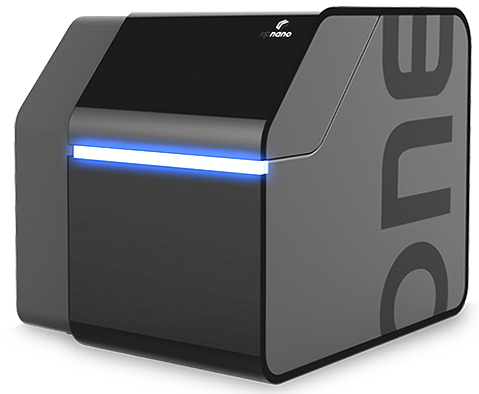Existing investors must like the position of Vienna-based UpNano and its two-photon polymerization (2PP) technology because IGO Industries Group and others doubled down, investing more in the firm. The investment will be used to improve the firm´s offering and let the firm expand more in the US.
With 2PP, a laser precisely targets and cures a specific area (voxel) of resin material. The polymerisation takes place at the focal plane of the laser, and UpNano´s party trick is that it can enlarge the focal point to harden areas quickly or focus it in order to print more detailed elements. This gives UpNano a speed advantage compared to direct competitors and allows the company to print very tiny or larger objects and details, ranging from ≥170 nm to a few cm, in the same printer.
With the latest investment, UpNano also hopes to gain more control over its supply chain, quality assurance, and assembly. The company says that it has tripled sales compared to 2021 and hopes to release some speed increases and fundamental improvements to 2PP soon.
“In times of bumpy rides on the stock exchange and wild changes of ownerships in the highly competitive 2PP 3D-printing industry, we are grateful for a profitable 2021 and the trust – and deep pockets – of our existing investors. They alone financed our recent capital increase. This ensures our steady and focused innovation process as well as our independence and our expansion plans,” said UpNano CEO Bernhard Küenburg.
“Already our NanoOne range of printers offers the widest range of printable sizes and with 8 Mio. voxels per second the highest speed on the market. It also is capable of printing with living cells, but that is just the start. Even faster manufacturing speeds will enable true series production and more innovations will address the needs of specific industries. To this end we will expand our R&D department and intensify our efforts,” Chief Operating Officer Denise Hirner explained.
Since 2018, UpNano has been working to commercialize 2PP further. At the moment, almost all 2PP machines are sold to research labs and the research departments of pharmaceutical companies. It is very early days yet for understanding this market specifically. 2PP could be used to make tiny medical devices or instruments, as well as to increase the performance of existing medical devices and instruments. Other applications include sensors in the body or to make new MEMS sensors for mobile devices. We can also imagine tiny lenses for all sorts of optical systems or to make microfluidic devices more prevalent.
By changing nano-sized parts, textures, and details, the firm’s process could really create effects that will be impossible to make when manufacturing at the micro- or macro-scale. If UpNano can then also sufficiently increase speeds and build volumes, then it would have the throughput and capability to make centimeter size parts with properties and advantages created at the nanoscale, all in one machine. As to what kinds of parts and advantages they would be, we cannot be sure as of yet.
2PP is a credible investment as a technology because it is offers a potential gateway to so many new futures. At the same time, this potential excites many research labs around the world. The latter development means that UpNano and its competitors, such as Nanoscribe and Microlight3D, have exciting customers right now that are willing to pony up for their machines.
